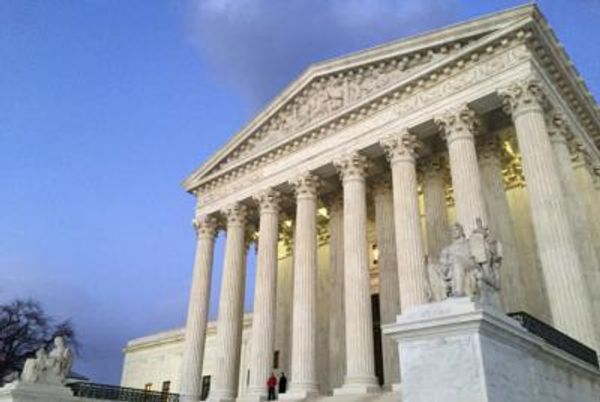
During Tesla's (TSLA) first-quarter earnings call on April 23, CEO Elon Musk declared that the EV automaker that he runs should not be looked at as "just an auto company," adding that it “should be thought of as an AI and robotics company," and invited investors to let go of their holdings if they think otherwise.
Though the EV giant feels that its novel systems will spark a revolutionary, technological renaissance for mobility, one of Detroit's Big Three automakers is one step slightly ahead in a kind of technology that has auto execs like Musk excited and federal investigators worried.
Related: The most 'American' truck isn’t made by Detroit’s Big Three

At Stellantis' (STLA) recent Investor Day, the multinational automotive conglomerate introduced some new AI-powered technologies that are set to roll out across its brand lineup.
The highlight is something that the automaker calls "STLA AutoDrive," a semi-autonomous hands-free driving assistant that is designed to compete with the likes of GM's Super Cruise, Ford's Blue Cruise and Tesla's Autopilot systems.
AutoDrive is part of a technology package that is powered by STLA Brain, a centralized, cloud-connected computing platform that provides access to all of a vehicle's sensors and actuators. Powered by Qualcomm chips, the STLA Brain allows the automaker to reduce the amount of computer chips needed in its new vehicles, and allows its cars to support over-the-air updates and significantly reduce the development time for new software.
STLA AutoDrive is designed to replace Stellantis's own Hands-Free Active Driving Assist, a Level 2 hands-free driving assistant that is already available in Stellantis cars.
Compared to its past technology, AutoDrive its touted to offer enhanced semi-autonomous driving capabilities. While the Level 2 Hands-Free Active Driving Assist requires drivers to stay fully alert and ready to take over control of the car, Stellantis says that AutoDrive will be able to support Level 3 autonomous driving capabilities, which can allow drivers to take their eyes off the road in certain conditions.
Stellantis says that the AutoDrive system will be steadily updated to grow the average period time between requests for driver takeover of controls. Initial rollouts will allow for 10 minutes of 'eyes-off-the-road driving,' which will soon grow to 20, 30 and eventually 40 whole minutes of such driving. Additionally, the automaker points out that the functions will initially be restricted to highway use.
Notably, Mercedes-Benz was the first to introduce a Level 3 autonomous driving system with its Drive Pilot system, which is approved for use in a very limited part of the United States. Additionally, GM's Super Cruise and Ford's hands-free technology is only compatible for use on 'compatible' highways that its respective automakers deem safe to use on.
More Automotive:
- Maserati exec defends the use of a car feature drivers hate
- Feds are skeptical about the safety of popular driver-assist tech
- Young guys who like loud cars are likely to be psychopaths, study suggests
Related: Forget Fisker, another Tesla rival is on watch
The Feds say this kind of tech is dangerous

Ford
Related: Feds are skeptical about the safety of popular driver-assist tech
AI-powered or not, Stellantis's new technology is dipping into a territory that is currently under the microscope of federal officials for legitimate safety concerns.
In April 2024, the NHTSA published the results of a three-year probe that looked into the safety of Tesla's Autopilot and Full Self Driving technologies, finding that the software did a bad job at keeping drivers engaged and looking straight at the road ahead.
The investigation looked into 956 crashes involving Teslas, where 29 people died. Fourteen of these deaths involved head-on collisions with other vehicles or obstacles that collided with the front of a Tesla vehicle.
Additionally, Ford is under a preliminary federal investigation, as its BlueCruise technology was determined to be a factor in fatal crashes in San Antonio and in Philadelphia, where Mustang Mach-E crossovers driving at night on major interstates collided with parked cars in its path.
On May 8, U.S. prosecutors launched an investigation to determine if the Tesla committed securities or wire fraud by misleading its customers and its investors about the actual capabilities of its Autopilot feature.
Related: Veteran fund manager picks favorite stocks for 2024







